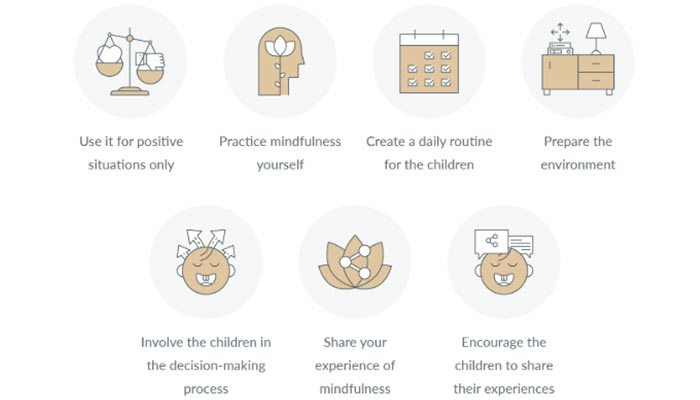
A strong technique for developing a robust, balanced, and focused mind is mindfulness. Participating in mindfulness exercises can raise general well-being, lower stress levels, and improve mental health.
Some of the greatest mindfulness exercises you can do on a daily basis will be walked through in this guide. These exercises are intended to assist you with focusing your attention on the here and now, regardless of your level of expertise.
1. Conscious Breathing
One of the easiest ways to bring your consciousness to the present moment is by mindful breathing which is a fundamental component of mindfulness practice. Located a peaceful area and settle in. Shut your eyes and concentrate on the inhalation and exhalation of your breath.
Take note of your breathing rhythm, the rise and fall of your chest and the feeling of air going through your nose. When your thoughts stray, and they will, softly and impartially bring them back to your breathing.
Start with five minutes each day and work your way up to fifteen or twenty. This technique enhances focus, lowers stress, and relaxes the neurological system.
2. Meditation Using Body Scan
A mindfulness practice that cultivates a strong bond between your mind and body is the body scan. Sit comfortable or lie down. With your eyes closed, focus on every part of your body, from your toes to your head. Take note of any tense, heated, or tingling feelings.
Recognize your discomfort points without attempting to address them. The key is this non-judgmental awareness. This technique helps lessen physical stress, enhance sleep quality, and heighten awareness of the body.
3. Conscientious Eating
Eating mindfully turns a routine task into a chance to practice mindfulness. Start by taking note of the colors, textures, and scents of your food. Chew carefully and in tiny bites, enjoying every taste. As you eat, pay attention to your body’s signals of hunger, fullness, and satisfaction.
During meals, turn off anything that could distract you such as TVs and phones. To improve your concentration, eat quietly. Benefits include preventing overeating, improving the sensory experience of eating and fostering a healthier relationship with food.
4. Meditation While Strolling
Walking meditation is particularly helpful if sitting meditation feels difficult since it blends attention with physical exertion. Pick a trail or path that is quiet. Take your time and walk carefully, focusing on each step. Take note of your body’s movement, the rhythm of your steps, and the sensation of your feet on the earth.
Align your breathing with your walking. Take three breaths in and three breaths out, for instance. Walking meditation improves mental clarity, lowers stress, and increases circulation.
5. Journaling for Gratitude
By concentrating on the things you value, gratitude writing is a mindfulness exercise that promotes optimism. List three to five things for which you are thankful every day. Write “I’m grateful for the laughs my family had at supper tonight” rather than “I’m grateful for my family”.
Write regularly, preferably right before bed or at the same time every day. Maintaining a thankfulness notebook on a regular basis helps foster resilience, enhance relationships, and enhance emotional well-being.
6. Paying Attention
Communicating more effectively and strengthening relationships are two benefits of mindful listening. Pay close attention to what the other person is saying. Avoid the temptation to interrupt or prepare your response. Take note of the speaker’s emotions, tone, and tempo.
To demonstrate interest, keep eye contact and employ non-verbal clues like nodding. Benefits include more empathy, fewer misunderstandings, and better relationships.
7. Love-Kindness Mindfulness
Compassion and positive feelings for oneself and others are fostered by practicing loving-kindness meditation. Close your eyes and take a comfortable seat. With self-compassion, repeat affirmations such as “May I be joyful, may I be well, may I be safe”. Slowly spread these words to family members, friends, and even people you disagree with.
As you convey love and kindness to each individual, picture them in your mind. Benefits include lowering negative emotions, increasing empathy, and accelerating emotional recovery.
8. Exercise for the Five Senses
Grounding yourself in the present moment can be accomplished quickly and effectively with five senses practice. Identifying five things you see, four things you feel, three things you hear, two things you smell, and one thing you taste should be your practice.
Perform this practice anytime you’re feeling overburdened or disengaged. This technique lowers anxiety and improves sensory awareness.
9. Conscientious Drawing or Coloring
Coloring or painting are examples of artistic pursuits that may be incredibly meditative. Select a coloring book or a piece of blank paper then get lost in the coloring or drawing process. Pay attention to the hues, designs, and motions of your hand.
Don’t evaluate your artwork; instead, concentrate on the process. This technique fosters relaxation, improves creativity, and lowers stress.
10. Drawing or Coloring with Awareness
Deeply meditative experiences can result from creative pursuits like coloring or painting. Take a coloring book or a piece of blank paper and start coloring or drawing. Pay attention to your hand’s colors, patterns, and motions.
One piece of advice is to focus on the process rather than evaluating your artwork. This exercise lowers stress, fosters calm, and improves creativity.
11. Yoga
Yoga is a great way to connect the mind and body because it blends awareness with physical movement. Take an online course or go to a yoga class. As you move between postures, pay attention to your body and breath. Respect your body’s limitations and work at your own speed. Yoga lowers stress and increases strength, flexibility, and mental clarity.
12. Utilizing Technology with Awareness
Your connection with gadgets might change if you integrate mindfulness into your tech routine. Establish designated periods for social media and email checks. Avoid multitasking when using your phone; instead, concentrate only on the current task. To cut down on distractions and screen usage, use applications or settings. Using technology mindfully promotes healthier habits, lowers digital fatigue, and increases productivity.
13. Conscientious Decluttering
A mindful practice that encourages organization and clarity is decluttering. Pick a tiny space like a desktop or drawer to tidy. Take note of the textures, shapes, and emotional meaning of the objects as you categorize them. Focus on one thing at a time and take your time.
“Does this make me happy or fulfill a purpose?” This exercise clears the mind, improves concentration and fosters a feeling of achievement.
14. Reading with Awareness
Reading mindfully entails focusing entirely on the material and avoiding outside distractions. Pick a book or article and read it slowly, taking in every word. Take occasional breaks to consider the content. Find a quiet area and turn off notifications to cut down on distractions. This exercise increases focus, lowers tension, and improves comprehension.
15. Apps for Mindfulness
You can create a routine and get guidance through different techniques by using mindfulness applications. Install applications such as Insight Timer, Calm, or Headspace. Participate in guided meditations, monitor your progress, and experiment with various methods. Use the app’s features to see what suits you best and set reminders to practice every day. Apps offer a range of mindfulness exercises, accessibility, and organization.
16. Conscious Observation
This exercise requires you to look around you with interest and without passing judgment. Pick an item such as a candle or flower and pay attention to its color, shape, texture, and aroma. Allow your attention to focus just on the item.
Just watch without categorizing or interpreting what you see. This exercise strengthens your sense of present-moment awareness and cultivates awe.
It doesn’t take a lot of time or money to incorporate mindfulness into your life. Start with one or two of the exercises mentioned in this guide then work your way up to more. Recall that practicing mindfulness is a skill that gets better with time and practice. You can develop a more peaceful mind, increased resilience, and a more satisfying life by engaging in these activities.
Also read the following related posts.

Leave a Reply